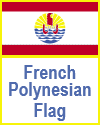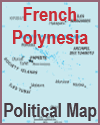French Polynesia is a stunning and diverse overseas collectivity of France located in the South Pacific Ocean. It comprises 118 islands and atolls spread across five archipelagos: the Society Islands, Tuamotu Archipelago, Gambier Islands, Marquesas Islands, and Austral Islands. Tahiti, located in the Society Islands, is the largest and most well-known island, housing the capital city, Papeete.
With a population of approximately 280,000 people, French Polynesia is known for its rich cultural heritage, vibrant traditions, and breathtaking natural beauty. The islands are famous for their crystal-clear lagoons, pristine beaches, lush rainforests, and striking volcanic landscapes. This unique environment attracts tourists from around the world, making tourism a critical component of the local economy.
French Polynesian culture is deeply rooted in Polynesian traditions, with a strong emphasis on music, dance, tattooing, and communal living. The traditional dance, 'ori Tahiti, and the art of tattooing are especially prominent cultural expressions. The official languages are French and Tahitian, reflecting the blend of indigenous and colonial influences.
Economically, besides tourism, French Polynesia relies on pearl farming, agriculture, and fishing. Black pearls from the Tuamotu Archipelago are particularly renowned. Despite challenges such as geographic isolation and economic dependency, French Polynesia continues to preserve its cultural heritage while navigating the complexities of modern development.
|












